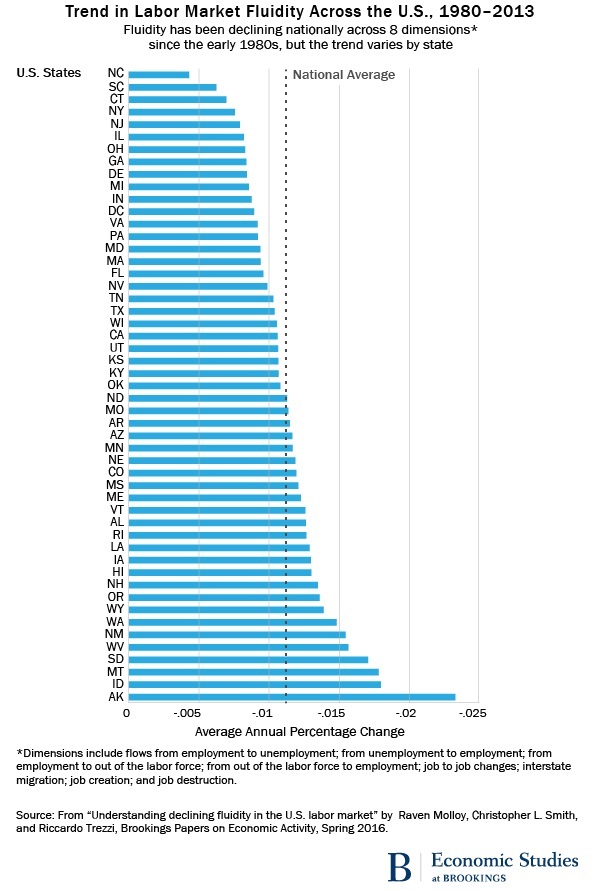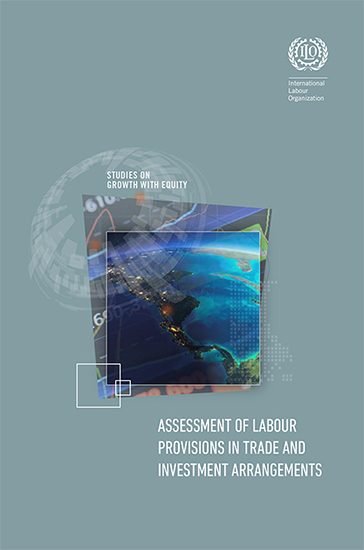MEDIA RELEASE
Overall Fluidity of U.S. Labor Market Has Been Declining for Over Three Decades , New Brookings Research Finds
Downward trends across multiple dimensions are related; decline began by early 1980s and is not in isolated sectors or due to changing labor force composition
The decline in the fluidity, or dynamism, of the U.S. labor market has been occurring along a number of dimensions—including the rate of job-to-job transition, hires and separations, and geographic movement across labor markets—since at least the 1980s, and these declines are all related, according to a new paper to be presented next week at the Brookings Panel on Economic Activity. Less fluidity in the labor market leads to fewer opportunities for workers to renegotiate their current position or change jobs and thus may have important implications for the macro economy in general, including on productivity.
In “Understanding Declining Fluidity in the U.S. Labor Market,” Raven Molloy, Christopher L. Smith, and Riccardo Trezzi of the Federal Reserve Board of Governors and Abigail Wozniak of the University of Notre Dame examine declines in fluidity across eight measures of labor market transitions (flows from employment to unemployment; from unemployment to employment; flows from employment to out of labor force; flows from out of labor force to employment; job to job changes; interstate migration; job creation; and job destruction), finding a broad-based decline in these transitions over at least the last three decades. They show that all measures of fluidity share a long-run trend decline, and that this common trend explains a large amount of the declines across all series.
Investigating the pattern of declining fluidity by geography, the authors use state-level panel data to identify factors that correlate with larger declines. The analysis reveals substantial variation in declines across states, with noticeably larger decreases in many Western states. Declines in fluidity were also smaller in states that saw more workers displaced from routine jobs in administrative, clerical, and production work, suggesting that the causes of the decades-long trends in fluidity go beyond technological change.
The authors rule out several likely explanations for the decline in fluidity: an increase in older workers in the workforce, more formal hiring practices, rising female labor force participation, and increases in homeownership and tighter land-use regulation. The authors also examine the hypothesis that improved matching between firms and workers could be contributing to the decline in dynamism — as matching improves, it becomes less likely that another, preferable job exists elsewhere – finding that it has not because improved matching should result in higher worker wages (all else constant), which has not been the case.
The ultimate cause of the decline in fluidity remains unclear, but the authors note several promising avenues for future research, including the role of increasing firm size and age, and changes in how worker pay is adjusted to reflect changing productivity and outside offers. The authors also find a possible connection between declining social trust and fluidity. Trust has been linked to economic growth and may ease the process of finding new jobs and workers. The analysis in today’s paper indicates that social and community ties deserve a look as another possible explanation for the trend.
Read the full paper from Molloy, Smith, Trezzi, and Wozniak here >>













